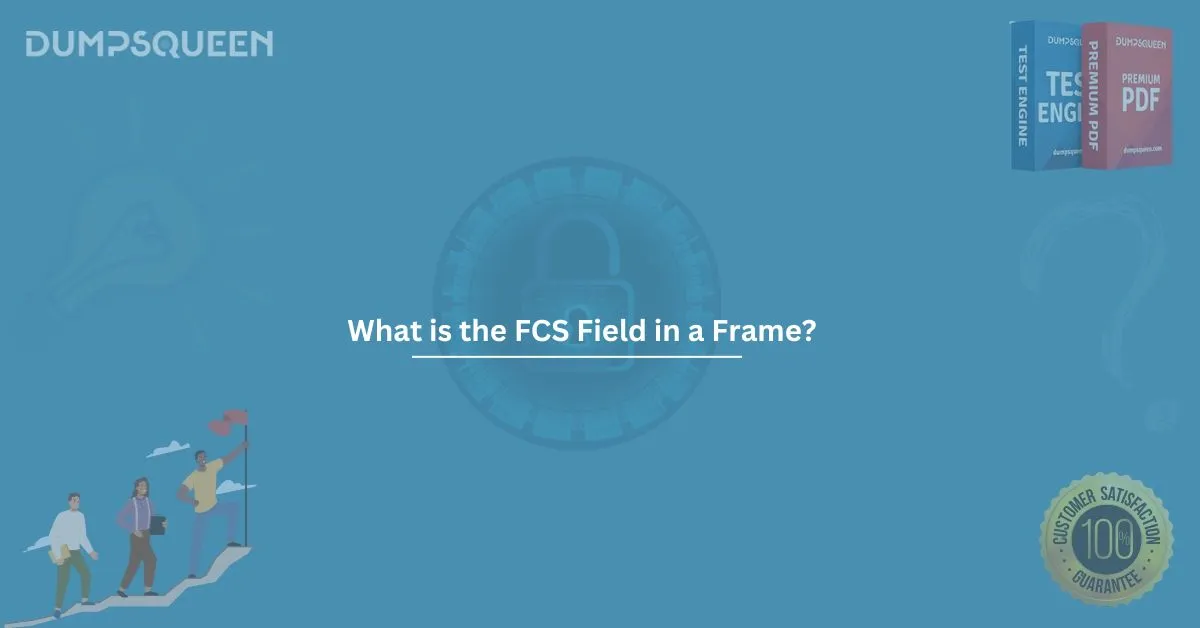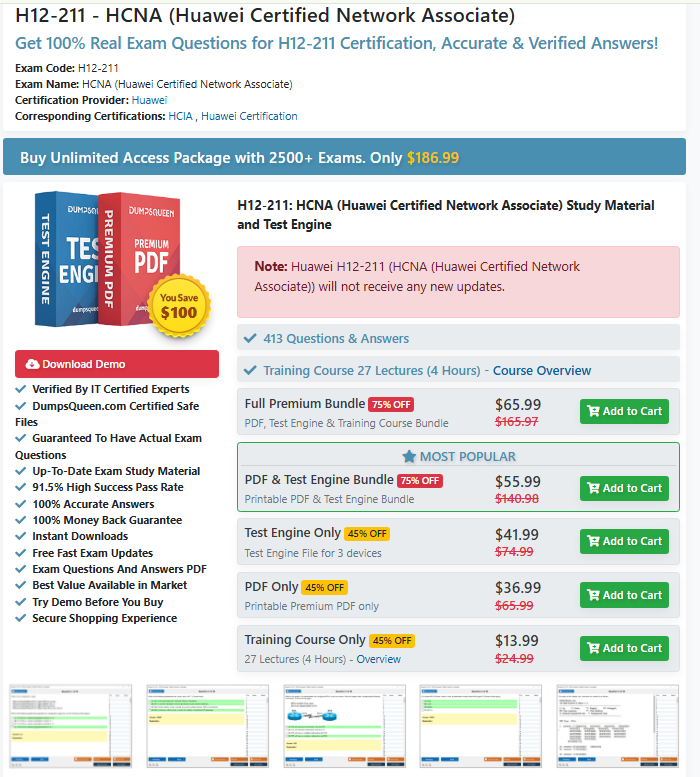In the world of networking, accuracy and data integrity are everything. One of the most vital mechanisms that help maintain this integrity in data communication is the FCS field in a frame. Whether you're preparing for networking certification exams or expanding your professional knowledge, understanding this fundamental concept is essential.
At DumpsQueen Official, we simplify complex topics like this to help you pass your exams with confidence. This article dives deep into the purpose, structure, and role of the FCS field in a frame and how it impacts data transmission reliability.
What is the FCS Field in a Frame?
The Frame Check Sequence (FCS) field in a frame is a section used for error-checking in data link layer protocols such as Ethernet. It ensures that the data sent from a source device arrives at the destination without corruption. When data is transmitted across a network, the FCS field helps detect any alteration or errors that may occur during the transfer.
This mechanism is essential for maintaining the accuracy and trustworthiness of data exchanges within a network. It plays a major role in protocols such as Ethernet, PPP (Point-to-Point Protocol), and others operating at Layer 2 (Data Link Layer) of the OSI model.
Purpose of the FCS Field in a Frame
The primary goal of the FCS field is to verify the integrity of data being transmitted. It is not responsible for fixing errors but detecting them so that corrective measures can be taken. Here’s what it does:
- Error Detection: The FCS field contains a cyclic redundancy check (CRC) value, which is a unique mathematical checksum calculated based on the frame’s data.
- Transmission Validation: The destination device calculates its own CRC value upon receiving the frame. If the values match, the frame is considered valid; if not, it is discarded or a retransmission is requested.
- Network Stability: By ensuring only error-free data is processed, it minimizes the chances of incorrect data being accepted and helps maintain consistent network performance.
Structure of a Frame: Where the FCS Field Fits
To understand how the FCS field works, it's important to understand the basic structure of an Ethernet frame. Here’s a simplified breakdown:
- Preamble – Synchronization bits to prepare the receiving device.
- Destination MAC Address – Identifies the receiver.
- Source MAC Address – Identifies the sender.
- Type/Length – Indicates the protocol or payload length.
- Data Payload – The actual data being transmitted.
- FCS (Frame Check Sequence) – The CRC checksum for error checking.
The FCS field is typically the last field in the frame, ensuring the entire preceding data can be verified.
How the FCS Field in a Frame Works
When a frame is created, the sending device calculates the CRC value based on all data fields and inserts it into the FCS field. Once the frame reaches the destination:
- The receiving device runs the same CRC algorithm on the received data.
- It then compares the result with the value stored in the FCS field.
- If the values match, the frame is deemed intact and is passed to the upper layer.
- If not, it indicates a transmission error, and the frame is discarded.
This mechanism ensures data integrity in noisy or unstable communication environments, like wireless or long-distance wired networks.
CRC – The Technology Behind the FCS Field
CRC (Cyclic Redundancy Check) is a mathematical algorithm used to generate a checksum from a data block. The polynomial used in CRC calculation is a crucial factor, and different network protocols may use different standard polynomials.
Key characteristics of CRC include:
- High Accuracy: CRC can detect common errors such as single-bit, double-bit, and burst errors.
- Efficiency: Requires minimal computational overhead compared to other error-detection mechanisms.
- Universality: Widely used in Ethernet, ATM, HDLC, and other protocols.
Why the FCS Field in a Frame Matters in Real-World Networks
- Reliable Communication
Imagine a financial transaction over the internet—any corrupted data could lead to serious consequences. The FCS field helps prevent such risks by ensuring that only clean, uncorrupted frames are accepted. - Fault Isolation
If errors are consistently detected via FCS mismatches, network administrators can identify potential faulty cables, interfaces, or devices in the communication path. - Resource Optimization
By discarding faulty frames early, the network avoids spending additional processing time on unusable data, which increases overall efficiency. - Diagnostic Tools
Tools like Wireshark allow professionals to inspect FCS fields in captured frames to troubleshoot network problems effectively.
Common FCS-Related Errors
- FCS Errors in Switches/Routers: Often logged as CRC errors or frame check sequence errors, these can indicate physical problems like damaged cables or interference.
- Dropped Frames: Frames with mismatched CRC values are dropped, causing retransmissions and possibly affecting application performance.
- Latency Issues: High FCS error rates can indirectly cause delays due to repeated retransmission attempts.
Practical Use in Networking Exams
In certification exams like CompTIA Network+, Cisco CCNA, or CyberOps Associate, questions about the FCS field in a frame are common. Candidates are often tested on:
- The purpose of the FCS field.
- Its position in a frame.
- The technology used (CRC).
- What happens when an FCS check fails.
Let’s practice with a few sample questions to help solidify your understanding.
FCS Field in a Frame – In Summary
The FCS field in a frame is a foundational concept for anyone diving into networking or preparing for technical exams. It plays a critical role in ensuring the accuracy of data being transmitted across various network types.
At DumpsQueen Official, we aim to provide comprehensive, exam-focused content like this to help you master topics that often appear in IT and networking certifications. Understanding how the FCS field works not only boosts your exam readiness but also equips you with practical insights for real-world networking scenarios.
So next time you come across a question about the FCS field in a frame, you’ll know exactly what it means and how it works.
Stay tuned to DumpsQueen Official for more technical deep-dives, exam guides, and expert resources!
Sample Questions – FCS Field in a Frame
1. What is the primary function of the FCS field in a frame?
A) Encrypt the frame contents
B) Identify the sender and receiver
C) Detect transmission errors
D) Indicate the frame length
Answer: C) Detect transmission errors
2. Which algorithm is commonly used in the FCS field to verify data integrity?
A) MD5
B) SHA-256
C) CRC
D) DES
Answer: C) CRC
3. Where is the FCS field typically located in an Ethernet frame?
A) At the beginning of the frame
B) After the source MAC address
C) Before the data payload
D) At the end of the frame
Answer: D) At the end of the frame
4. What does a mismatch in FCS values typically indicate?
A) A successful transmission
B) An encrypted frame
C) A corrupted frame
D) A duplicate packet
Answer: C) A corrupted frame




